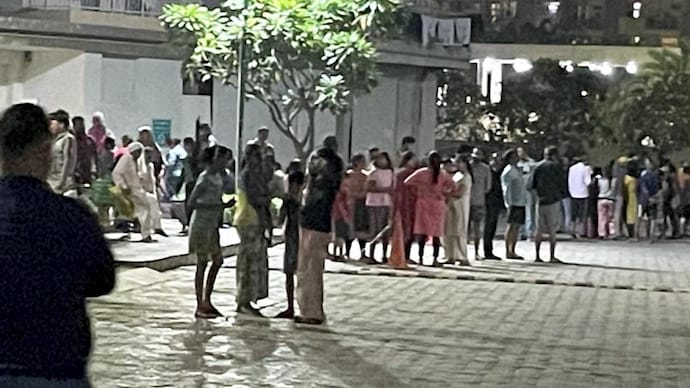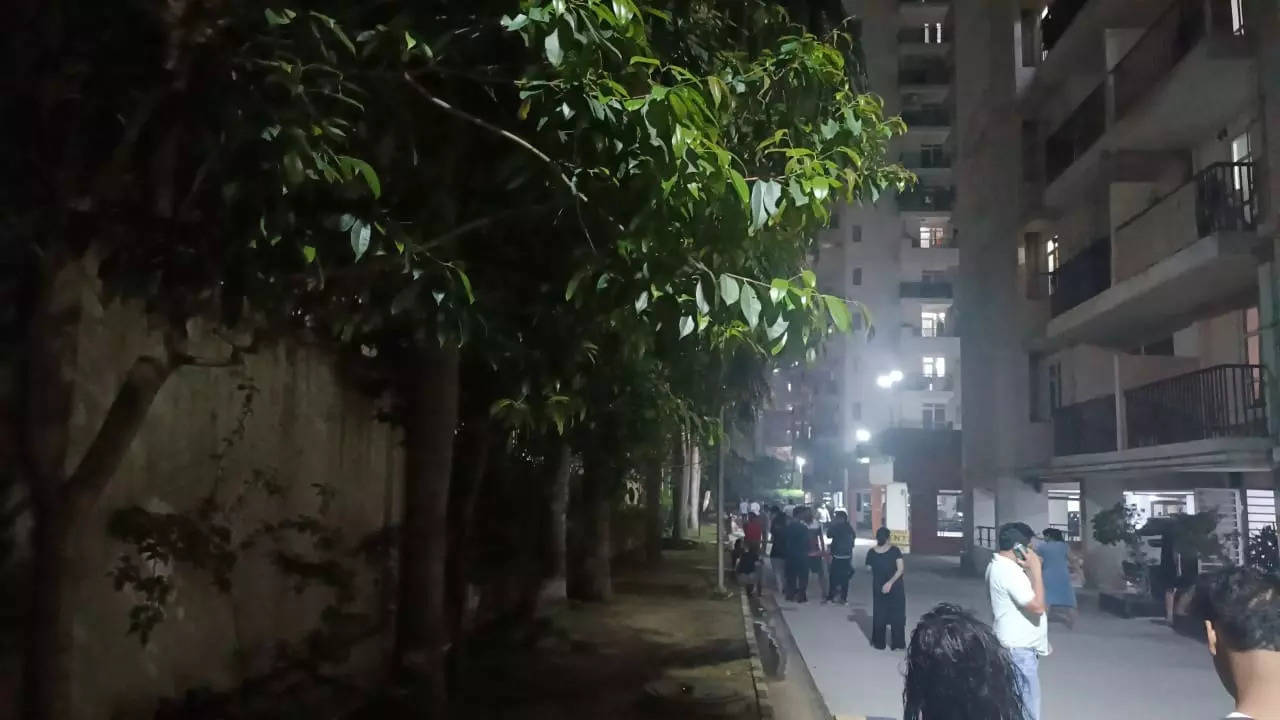Powerful Earthquake Shakes Delhi-NCR: Residents Share Videos of Terrifying Tremors
In a startling turn of events on Tuesday, the Delhi-National Capital Region (NCR) was jolted by a series of powerful earthquake tremors, leaving residents in a state of shock and awe. According to the National Center for Seismology, a seismic event of significant magnitude, measuring 6.2 on the Richter scale, originated in Nepal and reverberated across the Indian subcontinent. This seismic episode sent shockwaves through Delhi-NCR, prompting numerous residents to capture and share videos of the harrowing experience on social media.
The tremors, which began without warning, struck at the heart of one of India’s most densely populated regions, sending panic rippling through its cities and towns. The sudden jolts were felt far and wide, causing widespread concern and raising questions about the region’s preparedness for such natural disasters.
Delhi-NCR, home to millions of people and a thriving economic hub, has rarely experienced earthquakes of this magnitude. The event has, therefore, raised concerns about the structural integrity of buildings, the safety of residents, and the effectiveness of disaster management strategies in place. This unexpected seismic activity serves as a stark reminder of the unpredictable forces of nature that can disrupt the lives of countless individuals.
The earthquake, with its epicenter located in Nepal, occurred at a depth that sent shockwaves through the Earth’s crust, reaching Delhi-NCR with alarming intensity. In the immediate aftermath, the authorities scrambled to assess the situation and ensure the safety of citizens. Emergency services were put on high alert, and hospitals prepared to receive potential casualties.
As the tremors subsided, many residents emerged from their homes, offices, and schools, seeking refuge in open spaces. Fear and anxiety gripped the region as people grappled with the uncertainty of the situation. For some, it was their first encounter with such a natural calamity, leaving them bewildered and disoriented.

The impact of the earthquake was particularly evident in the reactions of individuals who took to social media platforms to share their experiences. Videos circulated widely, depicting swinging chandeliers, swaying buildings, and panicked pedestrians. These firsthand accounts provided a real-time glimpse into the chaos that ensued during the seismic event.
Twitter and Instagram were flooded with posts from shaken residents, each recounting their unique encounter with the earthquake. The power of social media allowed people to connect and share their stories, offering solace to those who had experienced the same terrifying ordeal.
One Twitter user, @DelhiExplorer, posted a video showing their office building shaking violently, with the caption, “Never thought I’d witness something like this in Delhi. Stay safe, everyone! #Earthquake #DelhiNCR.” This sentiment was echoed by countless others who expressed their shock and concern online.
Local authorities wasted no time in addressing the situation. The Delhi Disaster Management Authority (DDMA) swung into action, issuing advisories and safety guidelines for residents. The DDMA emphasized the importance of staying calm during such incidents, seeking refuge in open areas away from buildings, and keeping a supply of essential items on hand.

Additionally, the authorities urged citizens to check for any damage to their homes or workplaces, especially cracks in walls or ceilings, which could pose a threat if left unattended. They also advised people to stay informed through official channels and refrain from spreading unverified information, which could lead to unnecessary panic.
The seismic event also prompted a flurry of activity in neighboring regions. In Haryana and Uttar Pradesh, which border Delhi-NCR, residents reported feeling the tremors as well. While there were no immediate reports of significant damage in these areas, the earthquake served as a reminder that seismic activity can have far-reaching consequences.
As news of the earthquake spread, concerns mounted about the safety of critical infrastructure, including airports, metro systems, and power plants. The Delhi Metro Rail Corporation (DMRC) temporarily halted train services to assess the tracks and stations for any damage. Airports in the region initiated safety protocols to ensure the well-being of passengers and staff.
India’s Prime Minister, Narendra Modi, took to Twitter to express his concern for the affected regions. He assured the public that the central government was closely monitoring the situation and in contact with authorities in Delhi-NCR and Nepal. The Prime Minister also urged people to stay vigilant and follow the guidance provided by local authorities.
The earthquake, although a rare occurrence in this region, highlights the need for enhanced preparedness and infrastructure resilience. While natural disasters are inherently unpredictable, they serve as a reminder of the importance of disaster management plans, building regulations, and community awareness.
Experts have long warned of the seismic risks in northern India, particularly in regions prone to earthquakes. The Himalayan region, with its complex tectonic activity, has historically experienced significant earthquakes. It is imperative that lessons are learned from this event and applied to mitigate future risks.
In the wake of this earthquake, there is a pressing need for comprehensive post-disaster assessment and rehabilitation efforts. Engineers and structural experts are already conducting thorough inspections of buildings and infrastructure to identify any potential vulnerabilities. The government, in collaboration with local authorities, must prioritize retrofitting and reinforcing structures to meet seismic safety standards. This proactive approach can significantly reduce the risk of widespread damage in the event of future earthquakes.

Furthermore, educational initiatives on earthquake preparedness and safety protocols should be intensified. Schools, workplaces, and communities should conduct regular drills to ensure that residents know how to react swiftly and efficiently in case of another seismic event. Raising awareness about the importance of securing heavy furniture, having emergency kits readily available, and having a family communication plan can make a significant difference in minimizing casualties and damage.
The earthquake also serves as a reminder of the interconnectedness of our world. Natural disasters, irrespective of borders, have the potential to impact multiple regions simultaneously. India’s neighboring countries, including Nepal, also felt the tremors from this earthquake. International cooperation in disaster preparedness and response is essential. Mutual support and knowledge sharing can better equip nations to handle the aftermath of such events and aid in swift recovery.
In conclusion, the earthquake that recently rattled Delhi-NCR was a potent reminder of the vulnerability of our communities to natural disasters. It’s a call to action for governments, citizens, and organizations to invest in preparedness, infrastructure resilience, and community education. While the immediate crisis has subsided, the long-term effects and lessons learned from this event should guide our efforts to create safer and more resilient communities, not just in Delhi-NCR but across earthquake-prone regions around the world.



